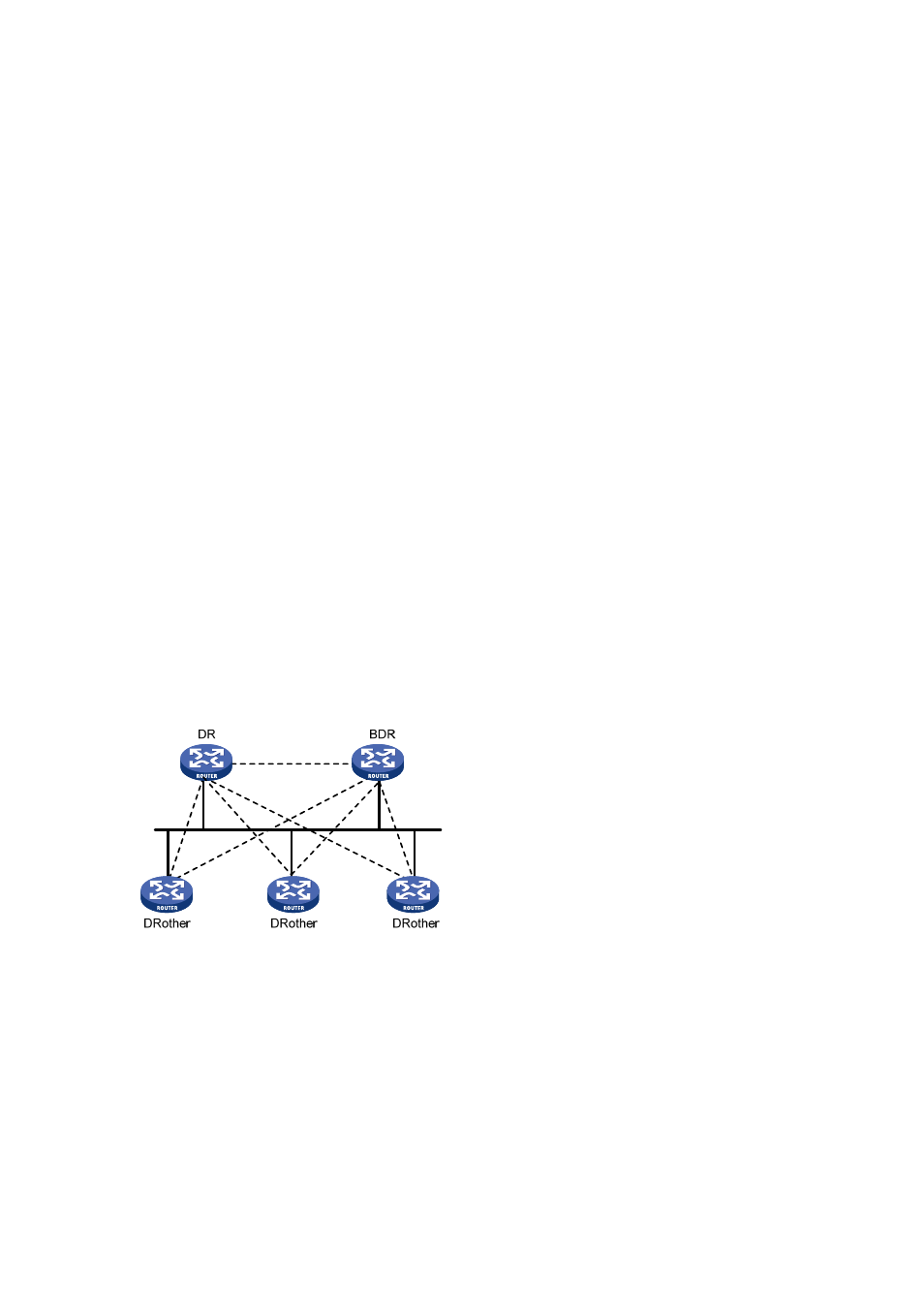Dr and bdr, Dr/bdr introduction, Dr/bdr election – H3C Technologies H3C WX6000 Series Access Controllers User Manual
Page 243

25-9
z
NBMA is the default network type, while P2MP is a conversion from other network types, such as
NBMA in general.
z
On NBMA networks, packets are unicast, and neighbors are configured manually on routers. On
P2MP networks, packets are multicast.
DR and BDR
DR/BDR introduction
On broadcast or NBMA networks, any two routers exchange routing information with each other. If n
routers are present on a network, n(n-1)/2 adjacencies are required. Any change on a router in the
network generates traffic for routing information synchronization, consuming network resources. The
Designated Router is defined to solve the problem. All other routers on the network send routing
information to the DR, which is responsible for advertising link state information.
If the DR fails to work, routers on the network have to elect another DR and synchronize information
with the new DR. It is time-consuming and prone to routing calculation errors. The Backup Designated
Router (BDR) is introduced to reduce the synchronization period.
The BDR is elected along with the DR and establishes adjacencies for routing information exchange
with all other routers. When the DR fails, the BDR will become the new DR in a very short period by
avoiding adjacency establishment and DR reelection. Meanwhile, other routers elect another BDR,
which requires a relatively long period but has no influence on routing calculation.
Other routers, also known as DRothers, establish no adjacency and exchange no routing information
with each other, thus reducing the number of adjacencies on broadcast and NBMA networks.
In the following figure, real lines are Ethernet physical links, and dashed lines represent adjacencies.
With the DR and BDR in the network, only seven adjacencies are enough.
Figure 25-7
DR and BDR in a network
DR/BDR election
The DR and BDR in a network are elected by all routers rather than configured manually. The DR
priority of an interface determines its qualification for DR/BDR election. Interfaces attached to the
network and having priorities higher than ‘0” are election candidates.
The election votes are hello packets. Each router sends the DR elected by itself in a hello packet to all
the other routers. If two routers on the network declare themselves as the DR, the router with the higher
DR priority wins. If DR priorities are the same, the router with the higher router ID wins. In addition, a
router with the priority 0 cannot become the DR/BDR.
Note that: